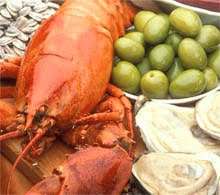
Here are 5 Best Protein Choices for the Environment:
1. Milk
On the abbreviated top 10 list, milk came in with the lowest carbon footprint (lentils were lowest on the list of 20). However, the EWG looked at the carbon footprint of 4 ounces of milk—that’s only half a serving. So a full cup would be twice as high.
2. Beans
Beans are a smart protein choice. They give you fiber and healthy nutrients, such as folate and iron, and are very low in saturated fat. They’re also one of the best choices for the planet. Unlike animal-based proteins, beans have fewer carbon inputs and outputs (with animal proteins, growing crops just to feed the animals significantly adds to their carbon footprint).
3. Tofu
Tofu’s carbon footprint (roughly one-third that of beef) largely comes from growing the soybeans and then processing it into tofu. Please keep in mind that if the label doesn’t say it is 100% USDA Certified Organic or non-GMO, there is a good chance it was made from genetically modified soybeans.
4. Eggs
Feeding chickens, and the energy used on poultry farms, adds to the carbon footprint of eggs. But as far as animal proteins go, eggs’ carbon footprint is relatively low. In addition to protein, eggs give you some vitamin D and lutein and zeaxanthin, which are good for eye health. Although eggs contain some saturated fat and cholesterol, eating one a day shouldn’t raise your cholesterol levels.
5. Chicken
Chicken is the best meat choice, but on the full list of 20 foods, chicken ranks 6th meaning that its carbon footprint is still higher than plant foods and tuna. From an environmental and health perspective, though, eating chicken is better than eating beef.






No comments:
Post a Comment